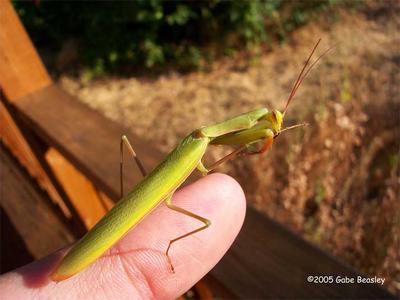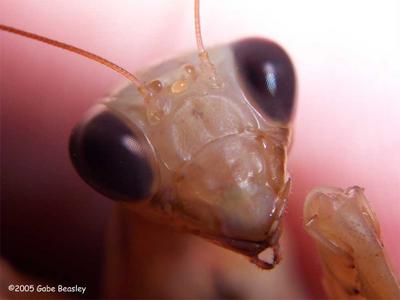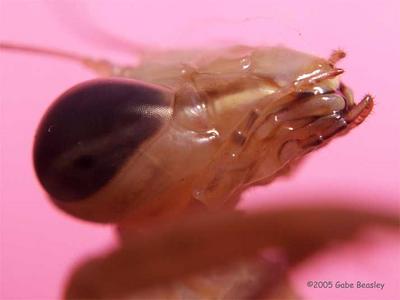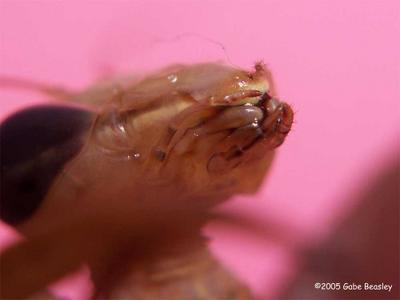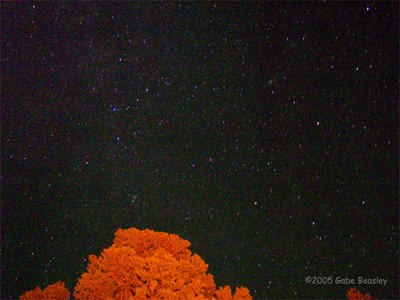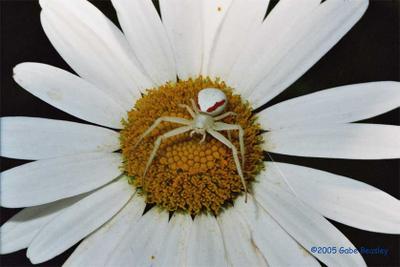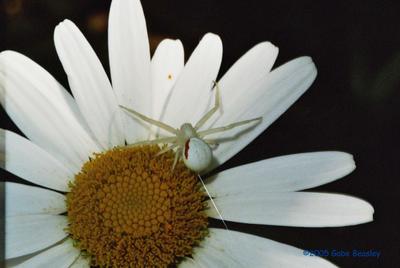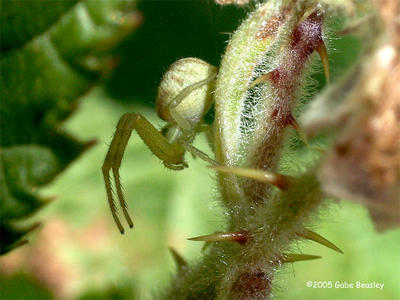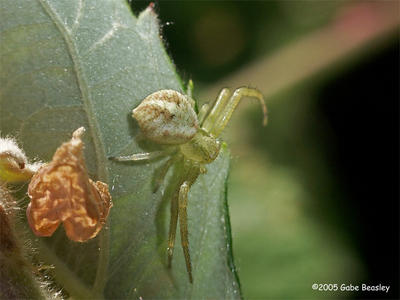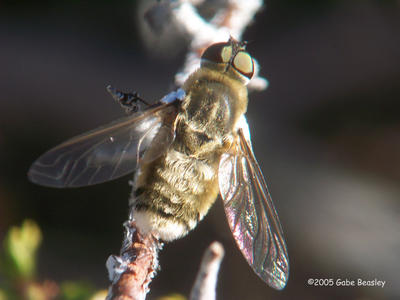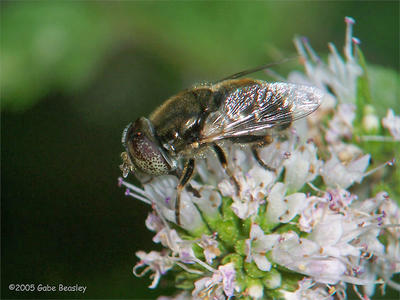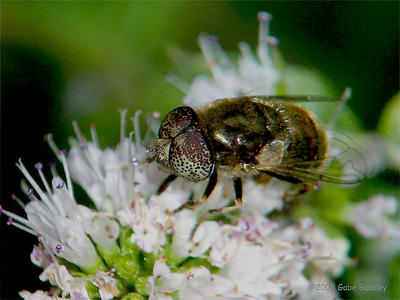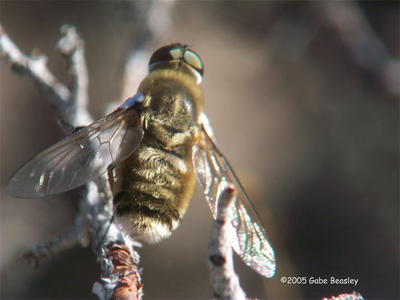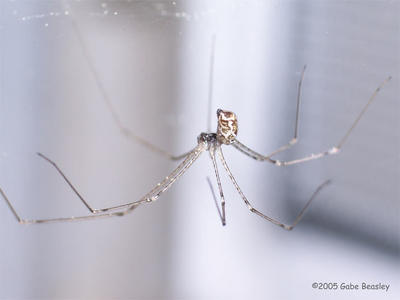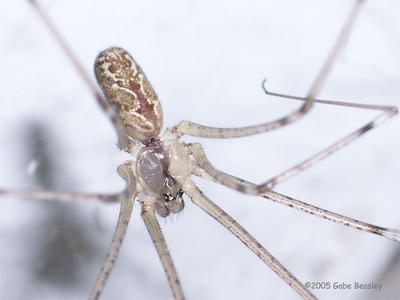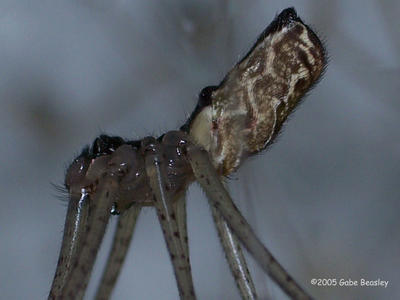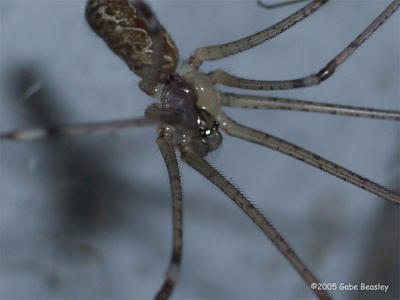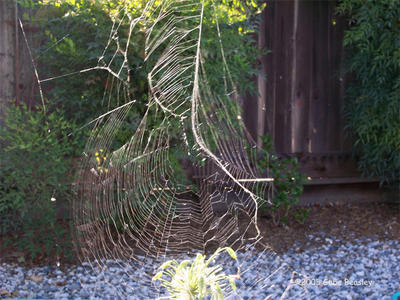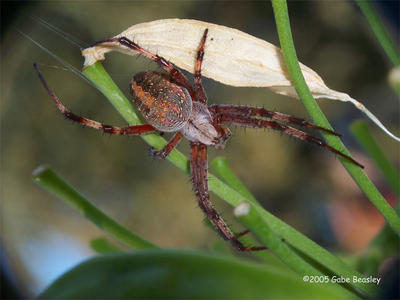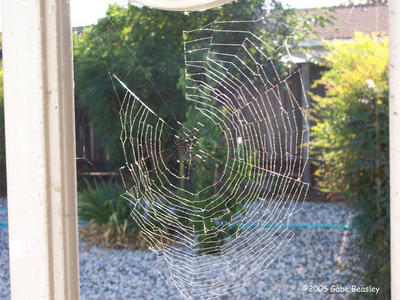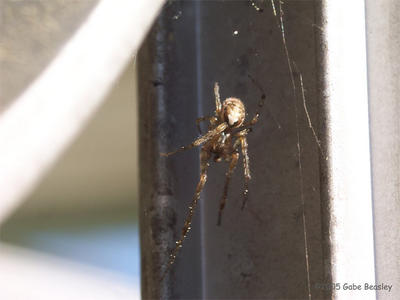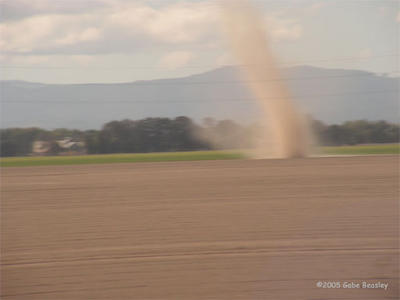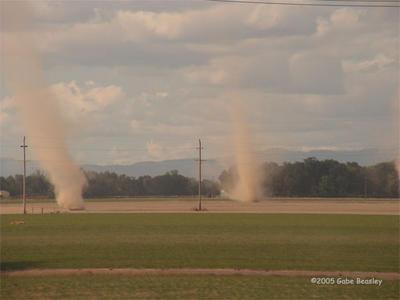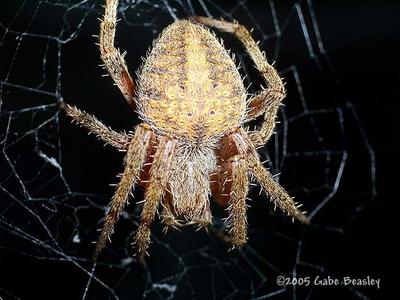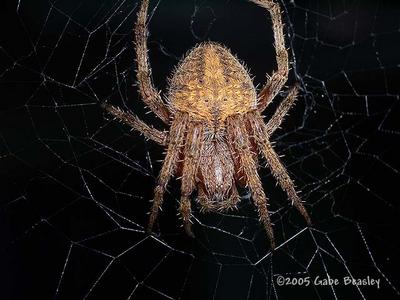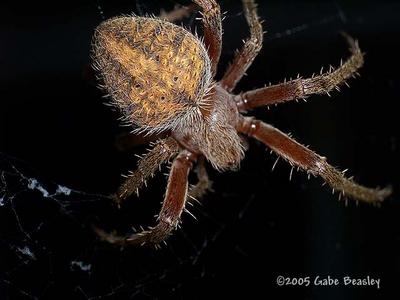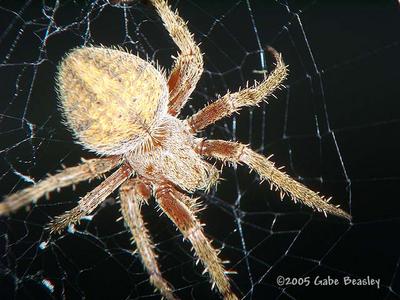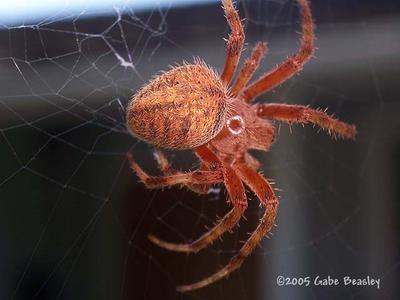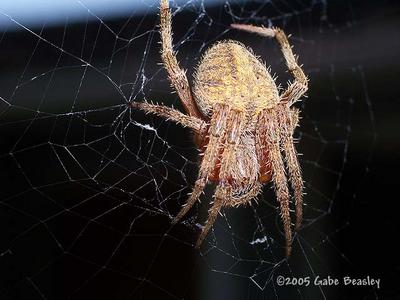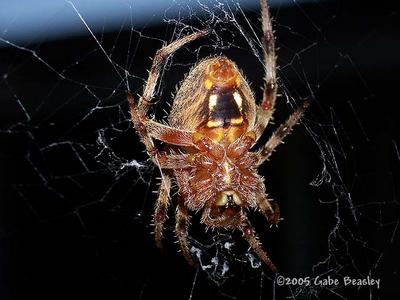
These cool spiders are quick and hard to photograph. The slightest movement makes
them run and they don't stop until you can't see them and they are four or five feet
away. I either have had to catch or use a super-teli-macro lens which can catch shots
like this from four feet away to get pictures of them. But recently I tried even more
waiting and approaches. The problem with this was there are so many of them I feared
I was stepping on them and killing the very thing I admire. So I got really lucky when
a hordes of them seemed to hypnotize each other and this shot was possible. They do not
hunt or eat each other to my knowledge and 100s and 100s can often populate a small back
yard here. (Not easy to setup). Wolf spiders are rare in that they actually carry there
young as well, the mother carries her egg sack and then young until they are older on her
back. And incredible show of parental ability and a study in “spider sociability” they
are not true communal species but I’ve found 100s of them in the same area of differing
sizes and ages leading me to believe they tolerate each other and avoid most dangerous
conflict. They would have too or there would just be a few “kings of the hills” in my back
yard. This one was a lucky shot I pulled off during some yard work being done on my house.
This old shirt had been used to insulate the pipes and a ton of Wolf spiders now covers
the area. Catching a picture of them is an illusive thing. I have more shots but this
is another one I'm going to have to search my database for. The general Wolf Spider's
scientific name is:
(Lycosidae) in this particular case: Lycosa gulosa.
(Forest Wolf Spider).
